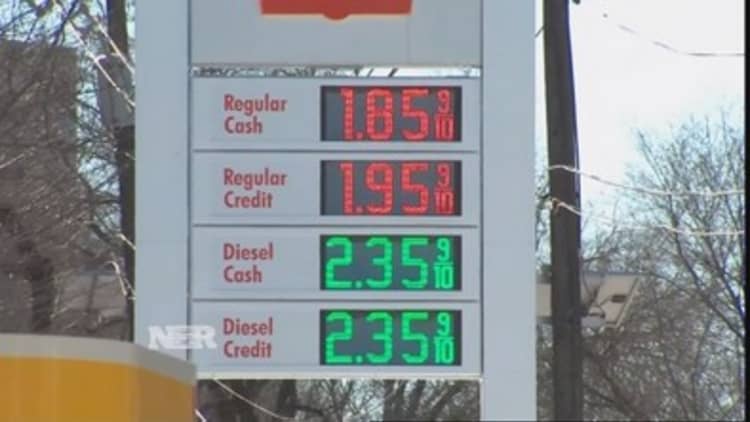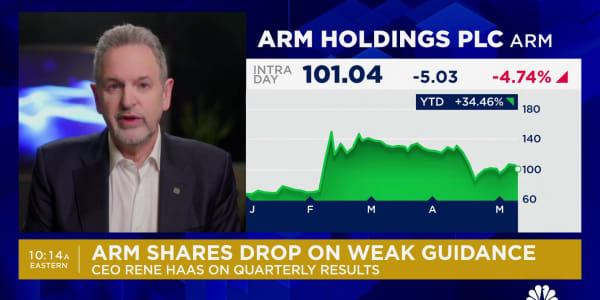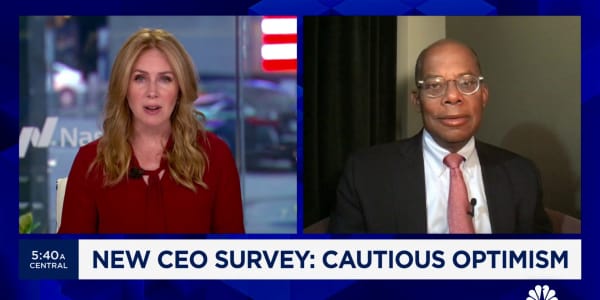Business investment has played an integral role in hopes that a bustling U.S. economy would light the way for the rest of the world in 2015.
Tumbling gas prices, a newly resurgent U.S. dollar and a weak-spending consumer have taken considerable luster off that picture.
In fact, companies reporting quarterly earnings are predicting not robust times ahead but rather tepid profit growth, with a cornerstone of those forecasts being a drop, not a rise, in capital expenditures, or capex.
Goldman Sachs lowered its capex forecast from a gain of 6 percent to a decline of 3 percent, a stunning turnaround that the firm attributed primarily to weakened energy companies that have suffered from oil's decline. The number represents the worst figure since the financial crisis days of 2009.
"We expect total energy capex will collapse by 25 percent in 2015," Goldman said in a report for clients. "The sector accounts for 33 percent of capex and should drag total S&P 500 capital expenditure growth into negative territory."
Read MoreStrong dollar creates 'tremendous systemic risk'
That, of course, is the bad news. The good news is that Goldman characterized capex outside of energy as "strong" as the firm holds to an "above-trend" growth forecast. Those hopes come for an economy that limped to the finish line in the fourth quarter of 2014 with well-below-consensus growth of 2.6 percent that capped off a year with just 2.4 percent annualized gains in gross domestic product.

How and when corporate America will part with the $1.8 trillion it has stashed domestically and another $2 trillion or so overseas is a key question for future growth.
Liz Ann Sonders, chief investment strategist at Charles Schwab, was among those forecasting a big lift for capex this year that she now says will be delayed. Capex spending tends to pick up about seven to nine months after oil bottoms. Crude prices are down nearly 8 percent for 2015 but have been on an upswing for the past week or so.
"What tends to happen is if you get a big crash in oil prices, it immediately affects oil and drilling capex but also" other sectors, Sonders said in a phone interview. "I don't think it means capex becomes a big drag on the economy. It's just not the lift a lot of people including me had hoped for."
Low confidence has been the key hurdle for companies to get more aggressive with capital investment and hiring, and the fourth-quarter earnings picture provided little reason for optimism.
Goldman said the current ratio of negative-to-positive outlooks is the highest in the 8½ years the firm has been tracking that metric.
Morgan Stanley strategist Adam Parker put the negative-to-positive ratio at 5.3 to 1.
"It would seem that management teams are becoming increasingly wary as energy revisions continue to fall and the dollar picks up strength," he said in a note.
Read MoreHow hedge funds play the oil slide
Parker also cautioned investors against worrying too much, saying that current expectations for stock market growth "are too low." Amid the dour outlooks he found hope in revenue growth for the quarter and pointed out that companies are easily beating a significantly lowered bar overall for earnings season.
Companies have been using their cash to prop up stock prices through share buybacks and dividends, a trend likely to continue should the capex outlook continue to weaken.
Expectations for energy earnings have come down 35.1 percent. Excluding energy and financials—the significance of doing so is debatable considering the two sectors comprise about a quarter of the S&P 500—full-year earnings growth expectations are at 7.9 percent.
Read MoreExxonMobilearnings beat, revenues lag
The trend, though, has been lower and perhaps for good reason.
Oil's decline has served as a legitimate black swan—a highly improbable event, foreseen by almost no one on Wall Street, with substantial consequences—and thus may not be fully appreciated yet.
After all, most economists pinned their buoyant hopes on a rejuvenated consumer, who was supposed to receive a major boost from gas prices below $2 a gallon at the pump in many places.
However, the holiday retail numbers were dismal, with Commerce Department reporting Monday that December retail spending was at a five-year low.
Read More
At the same time, the Institute for Supply Management manufacturing index, also released Monday, registered a 53.5, a number that economist Paul Ashworth at Capital Economics said is more consistent with 2 percent rather than the expected 3 percent or better GDP growth this year.
Missing expectations has been part of the economic landscape as of late. Bespoke Investment Group's economic surprise index, which measures the rate at which data beat or miss estimates, is negative over the most recent 50-day period.
Savita Subramanian, equity and quant strategist at Bank of America Merrill Lynch, pointed out that in addition to energy, the consumer sectors also have been feeling the squeeze. It's an observation not lost elsewhere on Wall Street.
"Consumers appear to be somewhat fatigued in their spending patterns, pulling back noticeably at the end of the year despite lower gas prices," Lindsey Piegza, chief economist at Sterne Agee, said in a note. "In the end, low gas prices will provide only a temporary boost while the key equation in terms of long-term success remains organic job and sustainable income growth."






